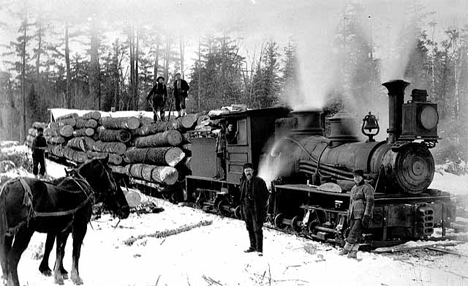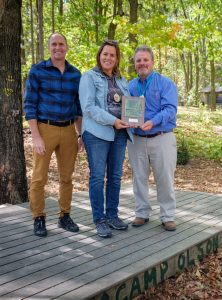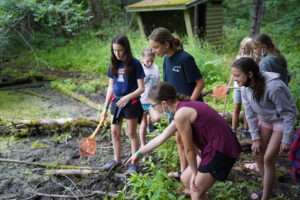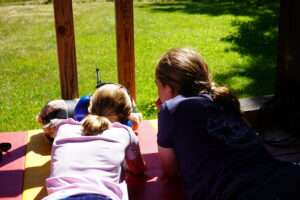Who We Are
Mission
Our Mission is to share the Spirit of the Northwoods while preserving a paradise of beauty with youth, families, and their leaders through YMCA programs that build healthy mind, body, and spirit for all.
Who We Are
Camp Olson YMCA is a resident summer camp for youth ages 5-17 and families.
As an independently chartered YMCA Camp, we’re proud to be a part of a broad and diverse network of YMCA Camps across the U.S. We are guided by our core values of caring, honesty, respect, responsibility, and equity.
Camp Olson YMCA is a 501(c)3 non-profit and accredited by the American Camping Association.

Our Reach
YMCA’s purpose is to strengthen communities, not just our own. Camp Olson serves youth and their families from around the world. Over recent years, we have served campers from more than 30 states, and 14 countries.
Our Impact
We drive change and strive to make a positive impact on individuals, families and communities through youth development, healthy living and social responsibility.
What We Do
Camp Olson was founded in 1954 “to preserve a paradise of forest beauty where youth and their leaders can find joy and inspiration in the years to come.”
We accomplish this every summer by providing programs for youth and adults that develop life skills, cultivate leadership, and foster an ethic of land stewardship and environmental responsibility.

History of Camp Olson
We acknowledge that Camp Olson YMCA is located on the traditional, ancestral, and contemporary lands taken from the Ojibwe people, recognized in the 1855 Treaty of Washington. We honor and respect those who were forcibly removed from and who are still connected to this land. We will work to protect and honor this place, educate our camp communities, and build relationships with all of the people that occupy this land, past and present.
Though Camp Olson YMCA was founded in 1954, the history of the land and the program has been rich before and since.
Formation of Geography
 The Laurentide Ice Sheet advanced and receded over the land shaping the hills and leaving behind the lakes and glacial stones which now line our fire pits and can be found throughout the property.
The Laurentide Ice Sheet advanced and receded over the land shaping the hills and leaving behind the lakes and glacial stones which now line our fire pits and can be found throughout the property.
Ancestral Land of the Dakota
In the 1600's, the Dakota Indians had communities in the area of Leech Lake, to the north of Little Boy Lake.
Ancestral Land of the Ojibwe
 The Ojibwe bands moved into the region during the mid-to-late 1700's. The Ojibwe people long lived within the rich ecology of the region. They moved according to a seasonal subsistence economy---fishing in the summer, harvesting manoomin (wild rice) in the fall, hunting, trapping, and ice fishing in the winter, and tapping maple syrup and spearfishing in the spring. Their main building material, wiigwaas (birch bark), could be transported anywhere to make a wiigiwam (lodge shelter).
The Ojibwe bands moved into the region during the mid-to-late 1700's. The Ojibwe people long lived within the rich ecology of the region. They moved according to a seasonal subsistence economy---fishing in the summer, harvesting manoomin (wild rice) in the fall, hunting, trapping, and ice fishing in the winter, and tapping maple syrup and spearfishing in the spring. Their main building material, wiigwaas (birch bark), could be transported anywhere to make a wiigiwam (lodge shelter).
Fur Trade
The Dakota and Ojibwe were the primary trappers of fur-bearing animals in the Northwest Territory. In exchange for these furs, European traders provided goods such as blankets, firearms, cloth, and metal tools.
By the 1840s the fur trade had declined dramatically in the region, partially due to changes in fashion tastes, the availability of less-expensive materials for hat-making, and because the US government reduced Dakota and Ojibwe hunting grounds through treaties. For many Dakota and Ojibwe people, who had by this time become increasingly dependent on the trade, exchanging land in order to pay off debts claimed by traders became a matter of survival.
The Treaty of Washington

In the Treaty of Washington the Ojibwe lost a large portion of their land to the US government. The treaty established the Leech Lake and Mille Lacs Reservations.
Area Logging
 A 28 mile railroad was built to connect seven different logging camps and operated from 1890-1911, hauling logs to Cross Lake where they were floated to the Mississipi River and downsteam to lumber mills. In 1894, federal law granted the Northern Mississippi Railroad 50 feet of land along either side of the centerline of its route through the Leech Lake, Chippewa Indian, and Winnebagishish Reservations. This railroad ran right through what is now known as Camp Olson and is now referred to as the "Old Grade".
A 28 mile railroad was built to connect seven different logging camps and operated from 1890-1911, hauling logs to Cross Lake where they were floated to the Mississipi River and downsteam to lumber mills. In 1894, federal law granted the Northern Mississippi Railroad 50 feet of land along either side of the centerline of its route through the Leech Lake, Chippewa Indian, and Winnebagishish Reservations. This railroad ran right through what is now known as Camp Olson and is now referred to as the "Old Grade".
Forests to Fields
The town of Longville was established circa 1906 as a logging town. As loggers moved out, tourists moved in. Area logging created many open fields scattered through the forests, prime for farming and agriculture. The many lakes in the areas brought people north for recreation.
E.O. Olson Acquires Land
E.O. Olson, a poultry farmer from Worthington, MN purchased 1600 acres of farm and timberland property in the Longville area. The land is used for tree and poultry farming and recreation, which will eventually become Olson Farm YMCA Camp.
Olsons Gift Land to YMCA
 E.O. and Bella Olson gave the now 1390 acre property to the YMCA hoping "to preserve a paradise of forest beauty where youth and their leaders can find joy and inspiration in the years to come."
E.O. and Bella Olson gave the now 1390 acre property to the YMCA hoping "to preserve a paradise of forest beauty where youth and their leaders can find joy and inspiration in the years to come."
Olson Farm YMCA Camp Established
 Max Clowers of the North Central Area (NCA) YMCA is appointed as Founding Director. The Lower Cabin is built and grading begins for cabins and dining hall. The first campers from Minot, Worthington and Winona present in late summer.
Max Clowers of the North Central Area (NCA) YMCA is appointed as Founding Director. The Lower Cabin is built and grading begins for cabins and dining hall. The first campers from Minot, Worthington and Winona present in late summer.
Name Change
Farming operations are discontinued and Olson Farm YMCA Camp officially opens on June 23rd with a staff to camper ratio of 1:1 and that fall changed its name to Olson YMCA Camp.
First Wilderness Trip
 The first backcountry canoe trip was launched into the Boundary Waters Canoe Area in the summer of 1960: The start of Camp Olson's tripping and seed to the future leadership development program.
The first backcountry canoe trip was launched into the Boundary Waters Canoe Area in the summer of 1960: The start of Camp Olson's tripping and seed to the future leadership development program.
Change of Hands
NCA YMCA joins with West Central Area Council of YMCAs to form the Mid America Region of YMCAs. As a result, Camp Olson Committee disbanded and YMCA Camp Olson Board of Directors formed. Management was transferred to four YMCAs: Rochester, Winona, Austin and Worthington, each of whom furnished Board Members in proportion to their level of participation.
Cabins Changed Names
The cabins in camps were only known by numbers, until 1971 when cabins were re-named to that of prominent Voyageurs and European Explorers in the area.
Les Blacklock Visits
 Les Blacklock, outdoorsman, photographer and writer spends one month at
Les Blacklock, outdoorsman, photographer and writer spends one month at
Camp leading to an ecological model and inspiration for the future.
Homestead Project Begins
 Per Les Blacklock's suggestion, a Pioneer Wilderness Cabin was erected by groups of campers using authentic tools and techniques of the time. Originally, the cabin was to be built at the south point of Lone Pine Field, but after a failed attempt, was built where it stands today. The Homestead Cabin was finally erected in 1991.
Per Les Blacklock's suggestion, a Pioneer Wilderness Cabin was erected by groups of campers using authentic tools and techniques of the time. Originally, the cabin was to be built at the south point of Lone Pine Field, but after a failed attempt, was built where it stands today. The Homestead Cabin was finally erected in 1991.
Independent Status
 Camp Olson becomes an independent YMCA and starts coed sessions.
Camp Olson becomes an independent YMCA and starts coed sessions.
Saving Camp
There is serious financial strife and Camp sells 200+ acres of property. The Board of Directors vote to return camp to North Central YMCA. NCA responds with appointment of a committee to reorganize and with a loan to continue operation. Dave Rogers takes over as Executive Director and Dick Perkins as Chairman, together, they saved Camp Olson as we know it today.
World Wide Web
Camp Olson gained it's first internet connection.
First Conservation Easement
Camp Olson was named Cass County's Conservationist of the Year after putting over 200 acres of land into a conservation easement.
Camp Seclusion
 Camp Olson acquired Camp Seclusion, adding an additional 50 acres and 4,000 feet of shoreline on Cooper Lake to Camp's Property. This property became home to the Adventure Outpost and base camp to our tripping program.
Camp Olson acquired Camp Seclusion, adding an additional 50 acres and 4,000 feet of shoreline on Cooper Lake to Camp's Property. This property became home to the Adventure Outpost and base camp to our tripping program.
Changing Seasons
 Russ Link begins as Executive Director and Camp Director becomes a full-time position.
Russ Link begins as Executive Director and Camp Director becomes a full-time position.
50th Anniversary
 Camp Celebrates it's 50th Anniversary and establishes the Adopt-A-Cabin Program.
Camp Celebrates it's 50th Anniversary and establishes the Adopt-A-Cabin Program.
Health Center Constructed
 New Health Center and Bathhouse completed.
New Health Center and Bathhouse completed.
The Lost Summer
Due to the COVID-19 Pandemic, Camp Olson YMCA ceased summer operation for the 2020 season. This was the first summer since 1954 that camp was not filled with happy campers and their leaders.
103 Acres Donated to Camp

Carmen & Jim Campbell gifted 103 acres to camp, which borders the south side of the Shurds property. This property was named "Norrsken" which is Swedish for Northern Lights.
Continue to Preserve Paradise
 Over the last 3 years, Camp Olson has put over 700 acres and 20,000 feet of shoreline into conservation easement, “preserving a paradise of beauty for youth and their leaders for years to come”. In 2021, Camp Olson was named Minnesota Land Trust's Partner of the Year.
Over the last 3 years, Camp Olson has put over 700 acres and 20,000 feet of shoreline into conservation easement, “preserving a paradise of beauty for youth and their leaders for years to come”. In 2021, Camp Olson was named Minnesota Land Trust's Partner of the Year.
Cabins Changed Names
Cabin names were updated to represent the names of native plants and trees.
70th Anniversary & CEO Succession
 Camp Olson YMCA celebrates it's 70th Anniversary and the CEO succession process finalizes John Lyon to be the next CEO following Russ's retirement.
Camp Olson YMCA celebrates it's 70th Anniversary and the CEO succession process finalizes John Lyon to be the next CEO following Russ's retirement.











